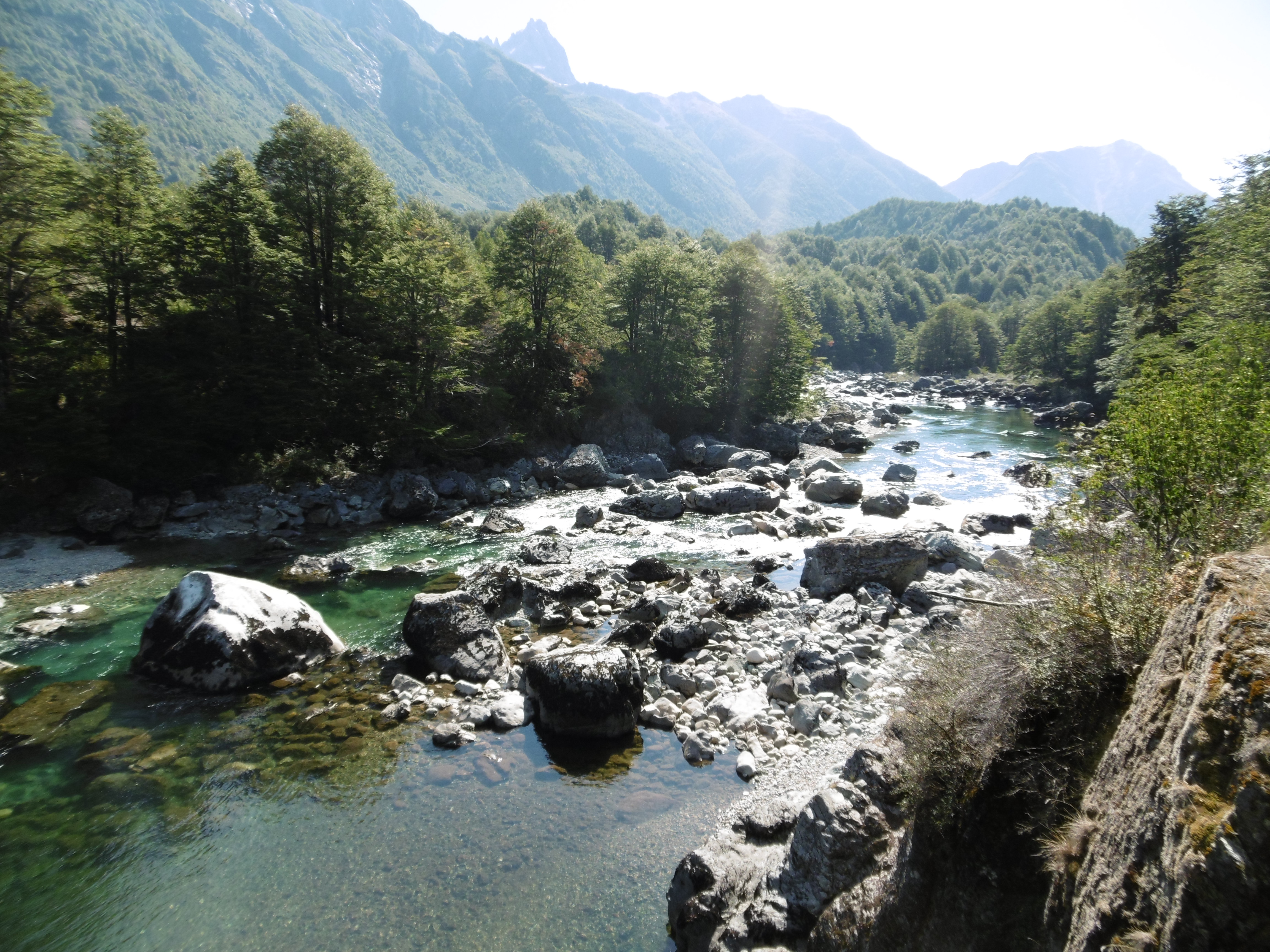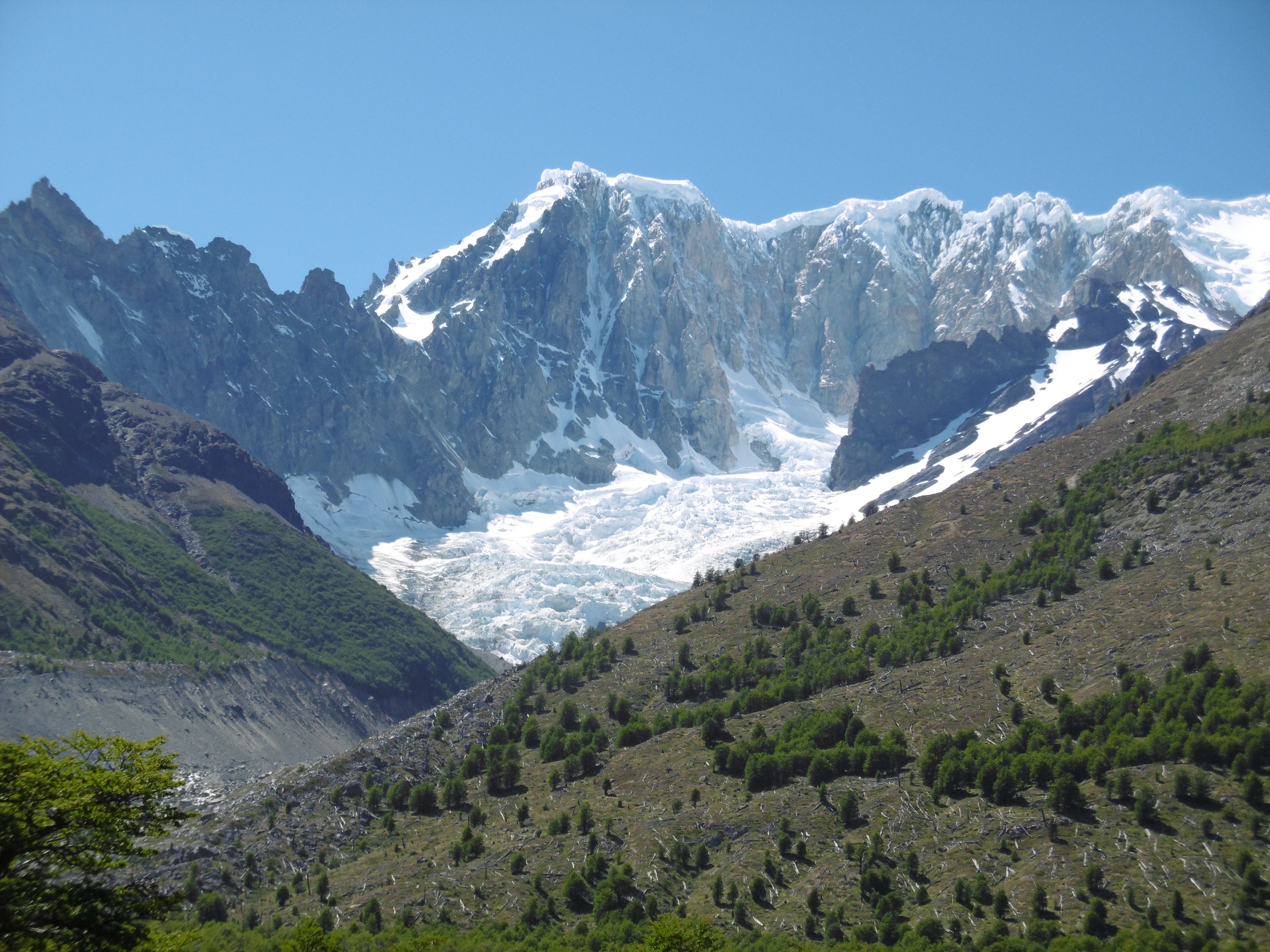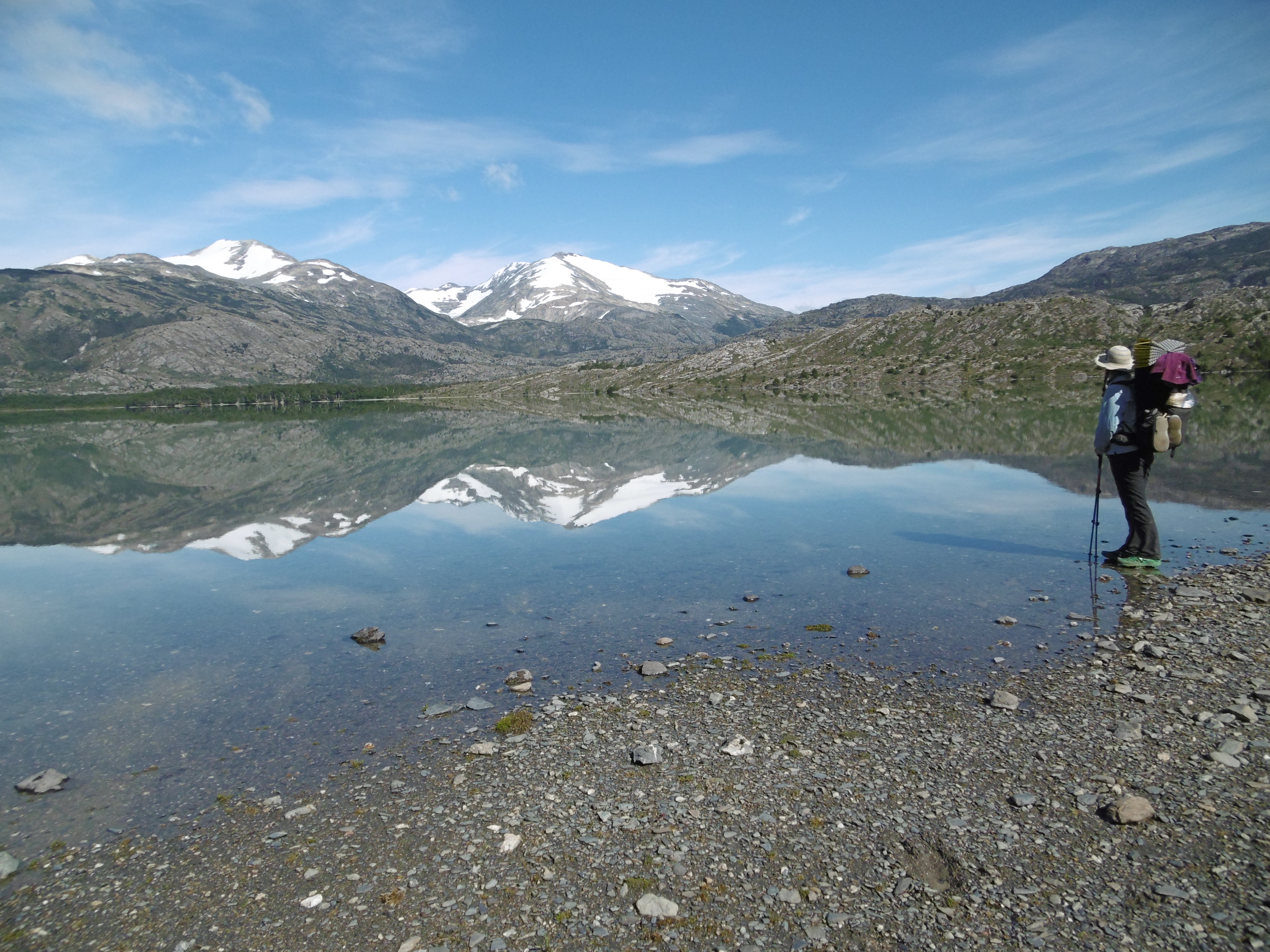Haz clic aquÍ para leer en español
While life in the campo moves slowly, the rivers run fast. I skip ahead of our timeline presentation to broach the first regional issue Her Odyssey will explore, water in Patagonia.
I’m going to be honest, after a few weeks in Patagonia, both Neon and I quit purifying.

At the Parque Patagonia headquarters, loitering in the manicured lawns and under shade of the massive trees, another traveler, Ben, asked us what had most stood out to us on the hike so far.
“The waters,” I answered. The lakes, rivers, and glaciers. Unequivocally. From Rio Claro and Lago Fagnano in Tierra del Fuego, to the massive Lago Viedma, the roaring Baker and Futaleufu, and the glaciers in between, water tells an essential part of the story of Patagonia. If Patagonia is an orchestra, water is the strings family.
Innocuous seeming trickles furrow deep clefts through mountains, driving into the valleys and becoming rivers. Rivers by which the original natives oriented and later which separated the pioneers from the rest of the country for entire seasons and which also sustained them and their livestock.

Crossing them requires respecting the current and listening well to the gauchos’ or campesinos’ directions on where to cross. Some border crossings between the countries are seasonal when the rivers are high. More than most other places I have traveled, Chile and Argentina do not draw frontiers around lakes but rather, through them.

The colors of the lakes were what first caught my attention, holding their own or reflecting sky. Walking around Lago Viedma, we watch clouds in the sky cast shadows across the surface of the water, traveling like small incorporeal boats before clambering across the jagged mountains. The light strikes into the silt; the rays pierce the opulent green shallows. Or sometimes aqua blue. One lake is silty, the next clear to astounding depths.

The southern Patagonian Ice Field “is the world’s second largest contiguous extra-polar ice field.” The wealth of this resource has moved borders as both countries rely on it. Both have also secured the ice fields in national parks since the early 1900s. Massive walls belie the glaciers which scraped across their faces, now rising thousands of feet above us as we walk. Moraines are everywhere.

Water is not complicated. Water is wet and it runs downhill. Indifferent and mighty, as with any component there is to love about nature. It goes about its business, in rhythm with time and all the other pieces to Patagonia.
Yet, the matter of water in Patagonia has become complicated. A shift happened, when we quit seeing water as part of the landscape and began to value it as a commodity. That now we seek to harness, control, and sell it. This is where the topic becomes complicated. A matter worth exploring. Unpacking what is our piece, what is our right, and what is our responsibility.
What are your thoughts?
El flujo de la Patagonia
Traducción por Henry Tovar
Si bien la vida en el campo se mueve lentamente, los ríos corren rápido. Me salto por delante de nuestra presentación en línea de tiempo para abordar el primer problema regional que Her Odissey explorará. Agua en la Patagonia.
Voy a ser honesta, después de unas semanas en la patagonia, tanto Neon como yo renunciamos a la purificación.

En la sede princicipal del Parque Patagonia, merodeando en los cuidados prados y bajo la sombra de los grandes árboles, otro viajero, Ben, nos preguntó qué había destacado más para nosotros en la caminata hasta el momento.
´´Las aguas´´, respondí. Los lagos, ríos y glaciares, de manera inequívoca. Desde Río Claro y Lago Futaleufú, y los glaciare en el medio, el agua dice una parte esencial de la historia de la Patagonia. Si la Patagonia es una orquesta, el agua es la familia de cuerdas.
Aparentemente inocuoa se escurre por surcos profundos en hendiduras a través de las montañas, conduce a los valles y convirtiendose en ríos. Ríos por los cuales los nativos originales se orientaron y que más tarde separaron a los pioneros del resto del país durante temporadas completas y qué también los sustentaron a ellos y a sus ganados.

Cruzarlos exige respetar la corriente y escuchar bien a las instrucciones de Gauchos o Campesinos de dónde cruzar. Algunos pasos fronterizos entre países son estacionales cuando los ríos estan altos. más que la mayoría de los otros lugares a los que he viajado, Chile y Argentina no dibujan fronteras alrededor de los lagos, sino más bien, a través de ellos.

Los colores de los dos lagos fue lo primero que me llamó la atención, celebrando su propio cielo o reflejando el mismo. Caminando alrededor del Lago Viedma, observamos nubes en el cielo proyectando sombras sobre la superficie del agua, viajando como pequeños barcos incorporales antes de trepar por las montañas escarpadas. Las huelgas de luz en el cieno; los rayos atraviesan las aguas poco profundas verdes opulentas. O a, veces azul agua. Un lago es limoso. El siguiente es c laro a profundidades asombrosas.

El Campo de Hielo Sur de la Patagonia ´´es el segundo campo de hielo extra-polar mas grande del mundo´´. La riqueza de este recurso se ha movido fronteras, ya que ambos países confían en el. Ambos han asegurado también en los Parques Nacionales desde principios de los años 1900. Paredes masivas desmienten los glaciares, que raspan sus caras. Ahora a de miles de pies por encima de nosotros mientras caminamos. Morrenas están en todas partes.

El agua no es complicada. El agua es húmeda y corre cuesta abajo. Indiferente y poderosa, al igual que con cualquier componente que hay en la naturaleza. Ella va por su propio camino, en ritmo con el tiempo. Y todas las demás piezas a la Patagonia.
Sin embargo, la cuestión del agua en la Patagonia se ha complicado. Un cambio sucedió, cuando dejamos de ver el agua como parte del paisaje y comenzamos a valorarla como una mercancía. Que ahora se pretende utilizar, controlar y vender. Aquí es donde el tema se complica. Un asunto digno de explorar. Desembalaje de lo que es nuestra pieza, lo que es nuestro derecho, y lo que es nuestra responsabilidad.

¿cuáles son tus pensamientos?






Comments (5)
Thanks for the awe inspiring pictures and the well written descriptions of the area. It is like reading a National Geographic article! You do such good work. It is impressive that you are so skillful and expressive both in English and Spanish.
Take Care,
Cliff and Martha Rawley
Hello Fidgit
I believe future (and maybe not to distant) wars will be fought over water – unless somehow we can all learn how to coexist.
Thank you for sharing your adventure with me.
Riff Raff’s mom
Essential, life giving, connected, flowing,…
Maker of the rainbow we see through your eyes.
Gracias!
As John Muir said, “If there is magic on this planet, it is found in water.”
Pingback: The Tompkins Land Donation: Shedding Light on Chile’s Conservation Conundrum – Her Odyssey